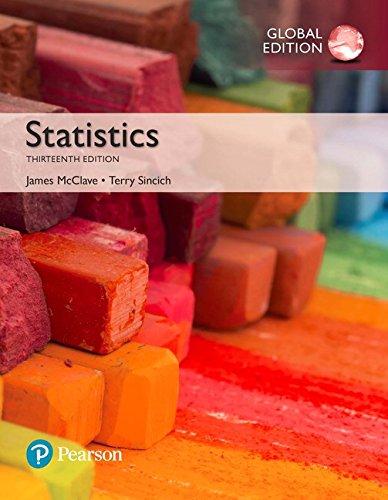Heart rate variability of police officers. The heart rate variability (HRV) of police officers was the subject
Question:
Heart rate variability of police officers. The heart rate variability
(HRV) of police officers was the subject of research published in the American Journal of Human Biology (Jan.
2014). HRV is defined as the variation in the time intervals between heartbeats. A measure of HRV was obtained for each in a sample of 355 Buffalo, NY, police officers. (The lower the measure of HRV, the more susceptible the officer is to cardiovascular disease.) For the 73 officers diagnosed with hypertension, a 95% confidence interval for the mean HRV was (4.1, 124.5). For the 282 officers that are not hypertensive, a 95% confidence interval for the mean LO6 HRV was (148.0, 192.6).
a. What confidence coefficient was used to generate the confidence intervals?
b. Give a practical interpretation of both of the 95% confidence intervals. Use the phrase “95% confident” in your answer.
c. When you say you are “95% confident,” what do you mean?
d. If you want to reduce the width of each confidence interval, should you use a smaller or larger confidence coefficient? Explain.
Step by Step Answer:






